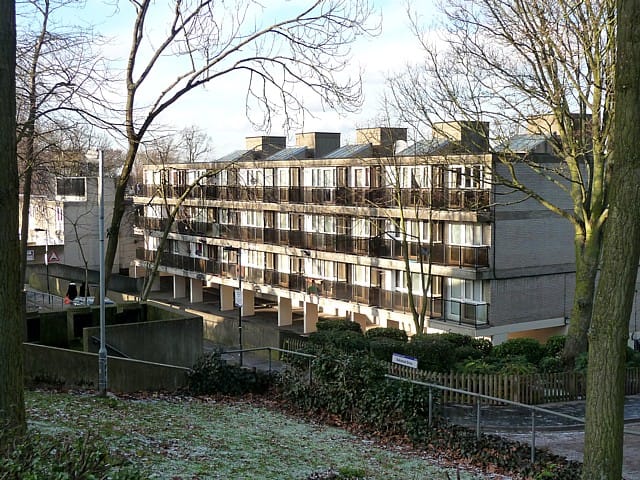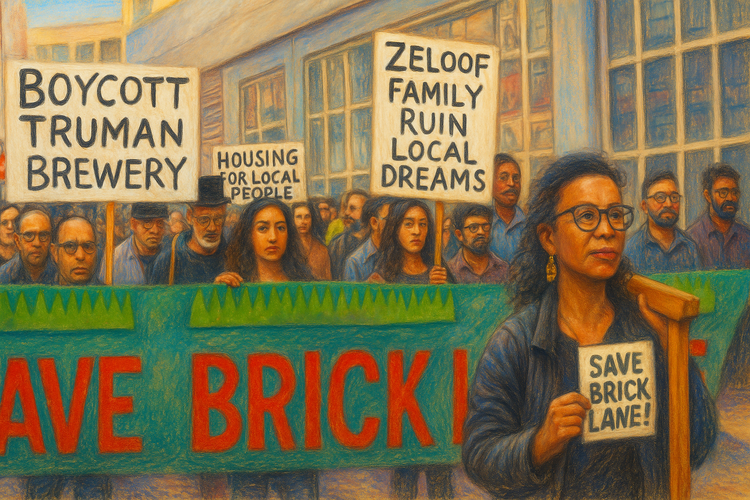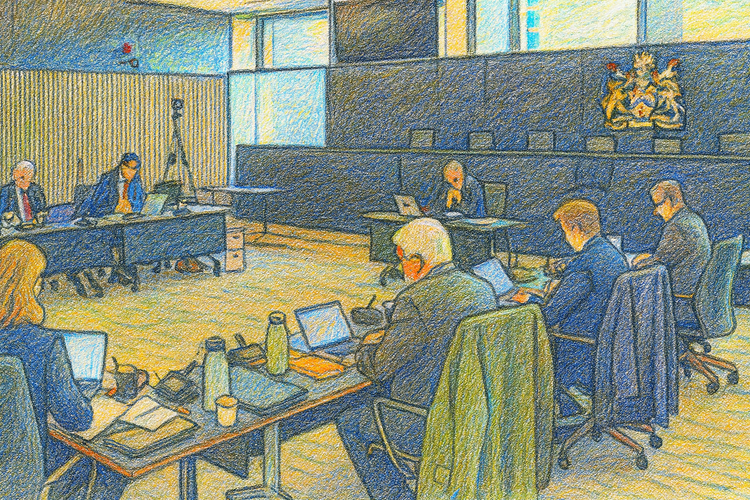Architects for Social Housing: Repair, Not Erasure

When regeneration becomes extraction, preserving community is a political act
In an age when “regeneration” has become a euphemism for erasure, Architects for Social Housing (ASH) stand as living proof that repair is still possible. Founded in 2015, ASH has demonstrated — through design, data, and direct collaboration with residents — that it is cheaper, cleaner, and more humane to refurbish and extend existing estates than to demolish them. But each project they take on raises a deeper question: who benefits when communities are destroyed in the name of renewal?
1. The Architecture of Extraction
In recent months, ConserveConnect.News has documented cases—from Brick Lane to Station Street, Birmingham, and Liverpool Street Station—that map the very pathologies ASH confronts. Through investigations such as
- Saving Station Street: Who Benefits When Britain Erases Its Own Memory?,
- Brick Lane Campaign Update: The Fight Deepens,
- Update: Campaign Gathers Momentum Against ACME’s Liverpool Street Redevelopment Plan, and
- The Billion Pound Loss: Who Really Profits from London’s Redevelopment Boom?,
the site has traced how public bodies have become facilitators of a financial extraction cycle: a process that transforms public land, heritage, and community into liquid assets.
The Intellectual Lineage of Resistance
Lewis Mumford foresaw the hollowing of civic purpose in his 1961 classic The City in History. Writing at the dawn of the urban–industrial age’s climax, he warned that the metropolis was becoming “a money-making machine divorced from the needs of life.” Mumford’s critique was moral as much as technical: he saw that the city’s true function was to balance the mechanical and the organic — production with culture, infrastructure with imagination. When finance overtakes that balance, the city turns parasitic, consuming the very social and ecological systems that sustain it. His call for “an architecture of life” over “an architecture of profit” resonates directly with ASH’s ethos of repair over replacement.
Jane Jacobs, writing only a year later in The Death and Life of Great American Cities (1961), brought this moral argument to street level. Where Mumford surveyed from the long arc of history, Jacobs looked from the pavement. She argued that a city’s health depends on its “sidewalk ballet” — the countless small interactions and overlapping uses that make urban life safe, adaptable, and creative. Her defence of old buildings and mixed uses was not sentimental; it was empirical. “New ideas need old buildings,” she wrote, insisting that continuity is the seedbed of innovation. ASH’s estate-based design proposals are a literal enactment of that principle: preserving lived texture while allowing incremental change.
Anna Minton, journalist and author of Ground Control (2009) and Big Capital: Who Is London For? (2017), updated these ideas for the neoliberal city. Her investigations exposed how British regeneration policy had mutated into a form of “social cleansing,” driving out lower-income residents under the rhetoric of “mixed communities.” She traced how local authorities and developers turned public land into private assets through opaque partnership models — a process she called “financialisation without accountability.” Minton’s work provides the contemporary political map on which ASH’s architectural alternatives operate.
Nicholas Shaxson connects the local and the global. In Treasure Islands (2011) and The Finance Curse (2018), he demonstrated how offshore finance hollowed out national economies, diverting resources from production into rent extraction. For Shaxson, the United Kingdom is not merely host to this system but one of its principal architects: its dependent territories form a web of tax havens enabling speculative flows of property capital. Estate demolition and “urban renewal” are simply the domestic expression of the same logic. His analysis of “finance capture” explains why councils and developers behave less like planners and more like fund managers — a diagnosis that underpins the broader critique running through this article.
Together, Mumford, Jacobs, Minton, and Shaxson outline the genealogy of civic resistance: from the moral city, to the democratic street, to the politics of ownership, to the global circuits of capital that now shape every local decision. ASH’s practice translates that lineage into the language of design — proving that architectural detail can be a form of political argument.
If demolition is the architecture of finance, ASH’s work is the architecture of resistance.
2. How Extraction Works
The Billion Pound Loss investigation provides a rare quantitative window into this system. Using case data from London redevelopment schemes, it shows how “value creation” in planning terms masks a net civic loss exceeding a billion pounds in foregone public benefit, social housing, and long-term rental income.
The mechanics unfold in predictable stages:
- Depreciation and Designation – An estate is labelled “obsolete” or “unviable.” Deferred maintenance is reframed as inherent failure.
- Valuation and De-risking – Consultants produce financial models that make refurbishment appear cost-prohibitive while inflating post-redevelopment returns.
- Partnership Formation – The local authority enters a joint-venture with a private or offshore fund, contributing public land as equity.
- Asset Transfer – Once planning consent is secured, the public stake is diluted through complex share structures. Debt replaces ownership.
- Demolition and Displacement – Communities are decanted; temporary accommodation and leasehold buy-outs consume budgets meant for construction.
- Speculative Build-out – A minimal proportion of “affordable” units are delivered; the remainder are marketed to investment funds or high-net-worth buyers.
- Exit and Recapitalisation – The developer exits via resale or refinancing; councils receive one-off receipts while losing long-term revenue streams.
Each stage produces a paper profit but a real social and ecological deficit.
By the time the balance sheets close, public space has been monetised, not modernised.
3. Architects for Social Housing: A Model of Continuity
ASH’s practice was founded precisely to intervene in this cycle. As a Community Interest Company, they work from a different premise: add homes without removing residents.
Their alternative schemes — for West Kensington & Gibbs Green, Northwold, St Raphael’s, and Central Hill — use infill and roof extensions to increase density while retaining communities. Each design is accompanied by costings, environmental data, and phasing plans proving that retrofit is not only possible but preferable.
By ASH’s count, their work has contributed to saving more than 2,000 homes from demolition. They have presented their methods at the ICA, Serpentine Gallery, and universities across Europe — translating activism into architectural research and giving residents the technical vocabulary to challenge “inevitability.”
4. Campaigns in Common Cause
Station Street, Birmingham
Saving Station Street examined how a corridor of civic heritage — the Electric Cinema (1909), the Old Rep Theatre (1913), the Crown Pub — faces erasure under a 50-storey tower proposal. The project encapsulates the national dilemma: maintenance versus liquidation. ASH’s principles of repair offer an antidote: retrofit the existing buildings, adapt upper storeys, and reinvest the same capital into skilled local labour rather than speculative glass.
Brick Lane, London
Our Brick Lane coverage followed the community fight against the Old Truman Brewery redevelopment. After the Tower Hamlets committee’s 2025 rejection, the issue now moves to a Public Inquiry, where local campaigners hold Rule 6 status. The case illustrates how planning authorities are pulled into the orbit of transnational investors. ASH’s resident-led methods point to what was never considered: adaptive reuse of the brewery’s structure to sustain — not supplant — its cultural economy.
Liverpool Street Station
In Update: Campaign Gathers Momentum Against ACME’s Liverpool Street Redevelopment Plan, we documented how a global development consortium sought to impose a ten-storey hotel complex above one of London’s most historic stations. The scheme was justified under the banner of “placemaking,” yet it exemplifies the top-down logic of extraction: air-rights monetisation, public-realm privatisation, and cultural displacement disguised as progress.
ASH’s philosophy of stewardship aligns with the growing coalition resisting such projects — from SAVE Britain’s Heritage to Historic England — all insisting that repair and reuse are the genuine modernisation.
Central Hill, London
Although we have yet to publish a full feature, ASH’s Central Hill Estate Alternative Proposals remain the benchmark for community-based retrofit. They show that energy efficiency, additional units, and social stability are compatible — provided the goal is homes, not balance sheets.
5. The Silence and Complicity of Public Bodies
Why, given clear alternatives, do councils persist in demolition? Because local government has been financially re-engineered. Under austerity, councils were told to become “entrepreneurial,” monetising assets to replace lost central grants. Land became collateral. Once in partnership with private capital, their budgets, borrowing, and political metrics aligned with the developer’s horizon: short-term receipts, long-term debt.
Planning departments, consultants, and quasi-public agencies such as development corporations now operate as gateways for financial flows. Viability assessments — often confidential — dictate outcomes more than design or need. The silence that follows community proposals like ASH’s is not administrative delay; it is institutional complicity.
“The city devours its own organs,” Mumford warned. Today, it does so with spreadsheets, not bulldozers alone.
6. What the Silence Conceals
Behind this procedural quiet lies a broader economic redirection. Inviting transnational capital has hollowed out the local repair economy: the joiners, bricklayers, and plasterers whose work once sustained the urban fabric. Demolition imports materials and labour, emits carbon, and eliminates the continuous employment that maintenance once provided.
ASH’s emphasis on retrofit and infill implicitly revives that local ecology — keeping expenditure within communities and transforming sustainability from slogan to practice. The work parallels ConserveConnect’s advocacy in Restoring Continuity: Housing, Heritage and Community in Thanet, which showed how small-scale repair underpins both environmental and economic resilience.
7. Who Really Profits
Shaxson’s framework helps identify the beneficiaries of this extraction economy:
- Offshore funds and REITs — access low-risk, high-yield property exposure through joint ventures with councils.
- Developer-managers and consultants — charge fees at each transaction layer, regardless of outcome.
- Construction conglomerates — profit from scale, not longevity.
- Financial intermediaries — securitise rental streams and refinance redeveloped assets.
- Local authorities — gain short-term capital receipts but lose housing stock and long-term rental revenue.
The Billion Pound Loss report quantifies this: what looks like growth on the books is in fact a transfer of wealth from the public to the private sphere.
Communities, meanwhile, bear the cost — through rent inflation, carbon emissions, and the loss of rooted social networks.
8. Towards an Ethics of Stewardship
If demolition is a political choice, so too is preservation. ASH’s practice suggests an alternative civic framework:
- Retention First – presume buildings and communities are assets to be upgraded.
- Transparent Viability – publish all financial models for independent review.
- Right of Counter-Proposal – formalise residents’ ability to present alternative schemes.
- Invest in Repair Skills – re-localise construction economies through craft training and small-firm procurement.
- Limit Debt Dependency – end the use of land as collateral for speculative borrowing.
- Value Continuity – treat heritage, culture, and community presence as measurable public goods.
This is not nostalgia; it is the rediscovery of sustainability as continuity — the ability of a city to maintain and renew itself without erasing its memory.
9. Conclusion: Repair as Political Act
ASH’s drawings and studies give tangible form to a wider moral argument. They fuse Jacobs’s street-level democracy, Mumford’s moral urbanism, Minton’s exposure of cleansing, and Shaxson’s critique of finance into an architectural practice of dissent.
Their plans prove that social justice and technical competence are not opposites.
They show that the choice facing Britain’s cities is not between modernity and memory, but between financial extraction and civic regeneration.
The question is no longer whether architects like ASH can show the way forward,
but whether local authorities will continue their silence —
or finally listen.
Related Reading on ConserveConnect.News
- The Billion Pound Loss: Who Really Profits from London’s Redevelopment Boom?
- Building New Towns, Letting Old Ones Die
- Saving Station Street: Who Benefits When Britain Erases Its Own Memory?
- Brick Lane Campaign Update: The Fight Deepens
- Update: Campaign Gathers Momentum Against ACME’s Liverpool Street Redevelopment Plan
- Restoring Continuity: Housing, Heritage and Community in Thanet
.




